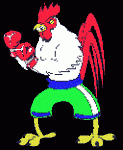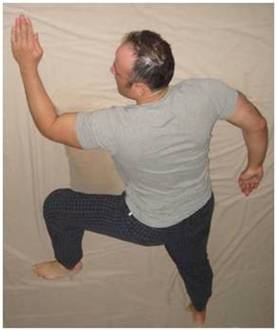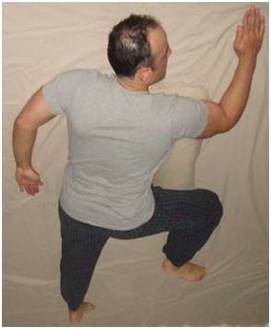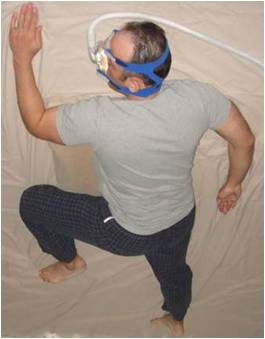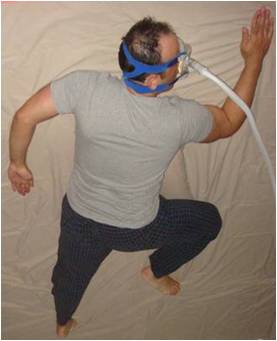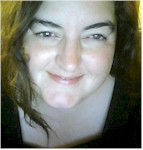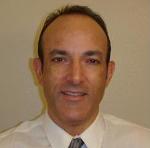benadryl?
Re: benadryl?
About that Astelin, I have to mention that it had a very quick, powerful sedating effect on me contrary to what the doctor and pharmacist told me to expect. I discontinued using it but kept it around for times when I needed something to put me to sleep.
Rooster
I have a vision that we will figure out an easy way to ensure that children develop wide, deep, healthy and attractive jaws and then obstructive sleep apnea becomes an obscure bit of history.https://www.youtube.com/watch?v=0ycw4uaX ... re=related
I have a vision that we will figure out an easy way to ensure that children develop wide, deep, healthy and attractive jaws and then obstructive sleep apnea becomes an obscure bit of history.https://www.youtube.com/watch?v=0ycw4uaX ... re=related
Re: benadryl? --astelin
After having used steroidal nasal sprays and finding they caused such stinging and bloody noses, I stopped to let my nose heal and eventually was given a trial of Astelin. Besides having annoying TV commercials, it was an excellent choice -- for me -- although to prevent the sensation of over-drying I used it at half-dose. And, I slept better on it! Not using it now because of insurance/$ reasons, but still have a little left for when oak season hits here.
I think it good to start with a partial dose of anything to see if less is more...
I think it good to start with a partial dose of anything to see if less is more...
"To know anything well involves a profound sensation of ignorance." -John Ruskin
"Gee, does that mean when I finally get the hang of all this, I'll wind up feeling just like I do now?" -Me
"Gee, does that mean when I finally get the hang of all this, I'll wind up feeling just like I do now?" -Me
Re: benadryl?
Bump.Falcon1 wrote:san_fran_gal,
You've inspired me to get my photos of this sleeping position accomplished, as I promised.
Here they are below. Thanks for the nomination to give the 'partial swastika sleeping position' a new name...and call it the Falcon Position!
Actually, I can't take full credit for this sleeping position. I remembered seeing it a long time ago on a re-run of an old Merv Griffin show. A sleep expert (don't recall his name) was one of Merv's guests, and he told Merv and the audience about this position. He said that studies and surveys had been done, and this was found to be the most comfortable position among all other sleeping positions. (Personally, I found that it actually took a little time to get used to it, when I first tried it. Now I find it extremely comfortable.) The guest also said that this sleeping position was one of the best for alignment, as well, since the spine of your neck, torso, and hips stay lined-up with each other.
The mental image I saw on that talk show episode stayed with me, and about three years ago I started to experiment and use this position at night. I found that it really helped significantly with somewhat reducing my sleep-disordered breathing related symptoms, in conjunction with my other treatment approaches, especially compared with back-sleeping (with or without a pillow, neck roll, etc) or side-sleeping positions.
As I mentioned previously, with this sleeping position, the head is kept turned completely to the side, while it rests flat against the bed.
The body is not actually completely prone, since the chest and abdomen stay lifted up off of the bed somewhat, because of the bend in the hip of one leg, which keeps the torso/abdomen propped up a bit.
For added support and comfort, I like to keep a pillow under the half of my chest and abdomen which is lifted up slightly off the bed. You can see the pillow that I have under my chest/abdomen in the photos.
Left-facing position:
Right-facing position:
As I mentioned before, this sleeping position is also very compatible with cpap gear, in my experience. Back when I was using my cpap machine and facemask/headgear, I slept in this position very consistently and effectively each night, without any interference.
Today, I went and dug my cpap mask out of the closet where it's been for the past two years (since I no longer need cpap treatment), and took these photos, to demonstrate that this sleeping position is compatible with facemask/headgear usage.
Left-facing position, with facemask/headgear:
Right-facing position, with facemask/headgear:
With practice and conditioning, I found that I was able to become accustomed to being able to switch from the left-facing position to the right-facing position while asleep, without any interference to my facemask/ headgear, for a greater degree of variety and comfort during the night. At first, I practiced this switching from left-facing to right-facing several times, consciously, before falling asleep at night for a couple of weeks. Then, my subconscious took over and I was able to switch from left- to right-facing a few times during the night while asleep, without interruption of my sleep.
For those that didn't see it earlier on page 1 of this forum string, here's the excerpt again from my ebook, at http://www.uarsrelief.com, which I wrote on the topic of "Sleeping Positions".
Best regards!
--------------------------------------------------------------------------
SLEEPING POSITIONS - by Eric Falcon, MD
It is widely accepted that sleeping on your back tends to worsen all forms of sleep-disordered breathing, including UARS, sleep apnea, and snoring. Sleeping on the back allows gravity to pull the soft tissues of the palate, or the tongue, down into the back of the throat and cause airway narrowing, or as in the case of sleep apnea, complete obstruction.
Some doctors will even go so far as to advise patients with sleep-disordered breathing to sew a pocket into the back of their pajamas so that a tennis ball may be kept in it at night. After rolling onto your back at night during sleep and repeatedly experiencing the discomfort of the tennis ball continuously there, you soon "train" your subconscious mind to learn to avoid this sleeping position all together.
An easier alternative to sewing a pocket in the back of your pajamas is to just go out and buy a Dickies T-shirt or other type of T-shirt (which you can usually find in the men's section of K-mart) that has a pocket in the front upper left of the shirt. Simply put the shirt on backwards and place the tennis ball in the pocket, which is now in the upper right of the back. You get the same effect!
Sleeping on your side is preferable to sleeping on your back. When sleeping on your side try to keep your head, torso, and pelvis all in a straight line (when viewed from behind), which is a neutral anatomical position that will help to keep your spine in alignment. You can achieve this result by using a pillow of the proper height under your head and also by placing a flat pillow between your knees. Also, keep your knees and hips in a relaxed but flexed position and bent at 90 degree angles.
Many authorities feel that sleeping on the stomach, known as the "prone" position, is not a good idea. The reason for this is because it can lead to improper alignment of the spine, and because it can also place excessive pressure on the gastrointestinal organs throughout the night.
Yet doctors routinely advocate that patients with sleep-disordered breathing sleep on their stomach or side, however, and avoid sleeping on their backs. By sleeping on your side, or on your stomach with your head turned off to the side, this elicits the pull of gravity to cause the soft tissues of the palate and the tongue to fall somewhat forward and away from the back of the throat, preventing them from narrowing or obstructing the airway.
Believe it or not there actually is a PRONE sleeping position I have found which I believe retains the beneficial effects of gravity on the tissues of the back of the throat and tongue, as well as maintains some degree of proper spinal alignment, and also avoids excessive pressure on the internal organs.
This is often called the SWASTIKA SLEEPING POSITION (it's really only a PARTIAL swastika shape) because of the position of the arms, which are pointed in opposite directions away from each other, with the shoulders and the elbows bent at ninety degree angles.
Here's a complete description of the SWASTIKA SLEEPING POSITION: To start out with, first lay flat on your belly for a second and turn your head to the left. Now, bring your left arm up so that your upper arm is extending out at a ninety degree angle to the side of your torso, and your left elbow is bent ninety degrees, with your left hand pointing up away from your feet. (Your left hand ends up being next to your face, in this position.)
Next, extend your right arm out to the opposite side of your body at a ninety degree angle and bend your right elbow ninety degrees as well, with your right hand pointing down towards your feet. (You arms will now form a 'half-swastika' shape.)
Next, bring your left thigh up so that your left hip and knee are each bent at ninety degree angles. Keep the right leg extended straight downward, with no bend at the knee or hip. In this position you will find that your abdomen/belly and chest will be lifted slightly off of the bed, so that there is not a feeling of excessive pressure on your gastrointestinal organs. For added support and comfort, you can place a pillow under the left half of your chest and abdomen.
I find this to be an incredibly comfortable position which I can remain in all night long with no discomfort. By the way, no pillow is used under the head in this sleeping position. The side of your face rests directly on your flat bed and the spine of your neck, torso, and hips should all line up in a straight line.
You can also switch to the exact opposite side, using the swastika sleeping position, so that you're looking to the right instead, with your right hand now up in front of your face and your right knee and hip bent, and your left leg straight. Basically just use the same steps as I described above but replace the terms "left" with "right" and vice-versa.
Aside: Although this is my favorite sleeping position, I really DISLIKE the NAME that was given to it, for OBVIOUS REASONS! The image of a swastika however seems to help people who've never seen this sleeping position before to visualize it better, and so the term helps a bit when attempting to describe this sleeping position to others. Nonetheless, I sure hope someone comes up with a better name for it sometime soon!
12/4/08 PostScript: A nomination has been proposed to give this sleep position the new name of the "Falcon Position." I'm honored!
I am finishing four months sleeping in the position and it is wonderful!
Thanks so much Dr. Falcon.
Rooster
I have a vision that we will figure out an easy way to ensure that children develop wide, deep, healthy and attractive jaws and then obstructive sleep apnea becomes an obscure bit of history.https://www.youtube.com/watch?v=0ycw4uaX ... re=related
I have a vision that we will figure out an easy way to ensure that children develop wide, deep, healthy and attractive jaws and then obstructive sleep apnea becomes an obscure bit of history.https://www.youtube.com/watch?v=0ycw4uaX ... re=related
Re: benadryl?
This is interesting. I have both my arms up but I sleep in this position with my legs akimbo and one side slightly up while prone. I'll have to try putting the other arm down. I've noticed that my pelvis and lower back seem to be less stressed in it...
Re: benadryl?
Falcon,
I too use a modified form of this position when falling to sleep (and have been for years). Due to my size, I find it uncomfortable to lay my head on the mattress, so I use a thin, soft pillow for under my head, and a fluffy pillow for support of my tummyand chest bumps. Others may find this helpful
Thanks for taking the time to post such useful information for all to share.
I too use a modified form of this position when falling to sleep (and have been for years). Due to my size, I find it uncomfortable to lay my head on the mattress, so I use a thin, soft pillow for under my head, and a fluffy pillow for support of my tummyand chest bumps. Others may find this helpful
Thanks for taking the time to post such useful information for all to share.
Re: benadryl?
Dr. Falcon, that's a very good demonstration, I sort of self-developed the similar sleep position. Glad to hear experts actually recommend this.Falcon1 wrote:(since I no longer need cpap treatment)
You mentioned you don't need cpap anymore. It's very encouraging to hear that. I started xPAP treatment 2 weeks ago, my wife already concerns the darth vader sleeping aside forever.
What (obviously good) things happened to you? Let me guess, exercise and weight loss?
Re: benadryl?
Fascinating thread! Some very interesting ideas brought up here about sleep aids, apnea, and all. I don't take benadryl. I use it topically for certain applications, but can't ingest it. It makes me tired (but does not make me go to sleep) and in addition to that, my restless legs react horribly. It was really like torture. LOL Being so tired I could barely move, but my legs bothering me so badly I couldn't possibly sleep. I think it took me TWO times to figure out what caused that.
Falcon1: When I was a teenager, I was reading this fashion magazine. there was a quiz in there along the lines of "What your sleep position says about your personality." That sleep position you describe (the Swastika) was in the list. They called it the Pharaoh position, because the angles of the arms brought to mind ancient Egyptian drawings. This was about 25 years ago, but I remember because I slept in a position very close to that. And the magazine said Pharaoh sleepers were very sure of themselves and not afraid of anything.
I don't sleep like that these days. The DDD cups sort of work like the "tennis ball in the pocket" therapy--only the wrong way. But I've had pretty good results sleeping on my side.
Cassandra
Falcon1: When I was a teenager, I was reading this fashion magazine. there was a quiz in there along the lines of "What your sleep position says about your personality." That sleep position you describe (the Swastika) was in the list. They called it the Pharaoh position, because the angles of the arms brought to mind ancient Egyptian drawings. This was about 25 years ago, but I remember because I slept in a position very close to that. And the magazine said Pharaoh sleepers were very sure of themselves and not afraid of anything.
I don't sleep like that these days. The DDD cups sort of work like the "tennis ball in the pocket" therapy--only the wrong way. But I've had pretty good results sleeping on my side.
Cassandra
Re: benadryl?
Thank you! I can't wait to try the Falcon position.
I've used Benadryl as a sleep aid occassionally for years. My doctor suggested it when she said I couldn't have any more lorazepam. I took loraepam for about a year, and it worked perfectly. I think she thought I was an addict, or was going to be. I took Benadryl every night at first, but I would wake up tired. So I stopped using it unless I had insomnia. Glad I stopped after reading these posts!
I've used Benadryl as a sleep aid occassionally for years. My doctor suggested it when she said I couldn't have any more lorazepam. I took loraepam for about a year, and it worked perfectly. I think she thought I was an addict, or was going to be. I took Benadryl every night at first, but I would wake up tired. So I stopped using it unless I had insomnia. Glad I stopped after reading these posts!
Re: benadryl?
Hey Doc,
I was reading your thread on sleep positions and UARS. I have bad allergies my CT scan from 2000 showed enlarged turbinates, narrowed mucosa and a moderately deviated septum plus I have some nasal collapse. Been recently diagnosed with severe apnea AHI 57. Can Uars caused or contribute to apneas by creating a vacum thus collapsing my airway?
BTW I never had the surgeries to correct these conditions.
I was reading your thread on sleep positions and UARS. I have bad allergies my CT scan from 2000 showed enlarged turbinates, narrowed mucosa and a moderately deviated septum plus I have some nasal collapse. Been recently diagnosed with severe apnea AHI 57. Can Uars caused or contribute to apneas by creating a vacum thus collapsing my airway?
BTW I never had the surgeries to correct these conditions.
Re: benadryl?
Mac33,Mac33 wrote:Hey Doc,
I was reading your thread on sleep positions and UARS. I have bad allergies my CT scan from 2000 showed enlarged turbinates, narrowed mucosa and a moderately deviated septum plus I have some nasal collapse. Been recently diagnosed with severe apnea AHI 57. Can Uars caused or contribute to apneas by creating a vacum thus collapsing my airway?
BTW I never had the surgeries to correct these conditions.
You mentioned that you’ve been diagnosed with severe sleep apnea. As I’m sure you’re aware, obstructive sleep apnea which is categorized as ‘severe’ is usually the result of the tongue falling down into the hypo-pharynx (back of the throat) during sleep. Also, the hypo-pharynx is typically narrower than it should be, in patients with severe sleep apnea. And a narrower airway makes it easier for a relaxed tongue to fall back and completely occlude it, preventing air from passing through. Thus periods of “apnea,” meaning a complete stoppage of breathing, occur repeatedly throughout the night.
Also, as I’m sure you’re aware, face masks which are used with CPAP devices to treat sleep apnea may either direct airflow in through the nose, or in through the mouth, or both.
For patients who use a CPAP face mask which directs airflow in through the nose, it is very important that they take steps to eliminate any potential forms of nasal blockage which may exist, such as enlarged nasal turbinates, a deviated nasal septum, or chronic nasal and sinus congestion.
Since you had a CT scan that previously showed you have enlarged turbinates and a moderately deviated nasal septum, among other forms of nasal impedance, it would make sense to have these addressed by an ENT doctor (in addition to seeing a specialist to get your allergies treated, which I hope you’re doing). Correcting enlarged turbinates and deviated septums is part of the bread-and-butter of what ENT doctors do, on a regular basis. And if I had such conditions, I wouldn’t hesitate to go and get a referral to see a decent ENT specialist in my area, and have these problems surgically corrected.
If you use a CPAP mask which directs airflow in through your nose, you’ll likely find that correcting your nasal impedance problems will help your CPAP treatment to be much more effective and efficient. And even if you use the kind of CPAP mask which only directs airflow in through your mouth, you’ll benefit in other ways by having your nasal impedance conditions corrected.
You see, it is normal and healthy for humans to breathe through their noses at night, while asleep. When any form of nasal blockage is present, it causes people to HAVE to breathe through their mouths at night, instead.
Mouth breathing during sleep is neither a natural nor a healthy behavior. For persons who are prone to obstructive sleep apnea, keeping the mouth hanging open while asleep makes it more likely that the tongue is going to go lax, and fall down and occlude the back of the throat (that's where CPAP comes to the rescue).
And even for persons who may not be prone to sleep apnea, and who have a normal diameter hypo-pharynx, they typically end up snoring when they breathe through their mouths during sleep. (Mouth breathing while asleep almost always leads to snoring.)
And snoring is not only disruptive to the sleep quality of one's bed partner, snoring also disrupts the normal sleep architecture of the person doing the snoring, which leads to feelings of tiredness the next day (which is a kind of mild sleep apnea, actually).
So, the standard, and usually effective, treatment for enlarged turbinates and a deviated nasal septum is ENT surgery. Regarding effective treatments for nasal mucosal swelling, congestion, and inflammation, below are some links to several posts I’ve written on this topic.
In this post, I discuss a little trick that I learned several years back of taking a non-sedating antihistamine, such as Claritin (Loratidine), at BEDTIME, and how much it benefited me and reversed my nighttime nasal congestion and swelling (which I didn’t even know that I had, until I stumbled upon this technique!):
viewtopic/t36483/viewtopic.php?f=1&t=36 ... 15#p319026
In this post, I discuss probiotics, herbals, and dietary factors as natural, drug-free ways of effectively reversing nasal mucosal congestion and inflammation:
viewtopic.php?f=1&t=43714&p=388456#p388456
In this post, I address the benefits of nasal sinus irrigation:
viewtopic.php?f=1&t=36738&st=0&sk=t&sd=a#p319080
I hope you find the relief you’re seeking.
Best regards,
Eric Falcon, MD
- SuperGeeky
- Posts: 414
- Joined: Mon May 19, 2008 3:55 pm
- Location: MaryEtta, Gawga (Now a part of the Union)
Re: benadryl?
Thanks Dr. Falcon, for your excellent description of severe OSA and blockage by the tongue
Only yesterday I posted the following Topic, albeit unanswered...
viewtopic.php?f=1&t=46758&p=420203#p420203
I think you explained the 'Thunk' sensation I experienced, rather than the 'flat wet straw' of the throat type of Apnea.
Looks like I need more work with the Medical Folks, determining some unresolved issues.
Gratefully,
SG
Only yesterday I posted the following Topic, albeit unanswered...
viewtopic.php?f=1&t=46758&p=420203#p420203
I think you explained the 'Thunk' sensation I experienced, rather than the 'flat wet straw' of the throat type of Apnea.
Looks like I need more work with the Medical Folks, determining some unresolved issues.
Gratefully,
SG
Re: benadryl?
BTW I refuse to wear a full or partial mask for psychological reasons. I've been using nasal pillows just fine and it has cleared up my allergies. I also have GERD and it could be that is being controlled by air pressure keeping acids down.
-
Confused and frustrated
Re: benadryl?
Allegra-D which contains pseudoephedrine is recommended in some patients? From my understanding is that pseudoephedrine can raise one's blood pressure. If not mistaken, most people who suffer with OSA already have elevated blood pressure. As far as making it easier to fall asleep, like another poster mentioned, Allegra or Bendaryl can exhasperate RLS or PLM. And does it not also suppress REM? IIRC, the late Michael Jackson never got an REM and did what he could to fall asleep.
Re: benadryl?
Confused and frustrated wrote:Allegra-D which contains pseudoephedrine is recommended in some patients? From my understanding is that pseudoephedrine can raise one's blood pressure. If not mistaken, most people who suffer with OSA already have elevated blood pressure. As far as making it easier to fall asleep, like another poster mentioned, Allegra or Bendaryl can exhasperate RLS or PLM. And does it not also suppress REM? IIRC, the late Michael Jackson never got an REM and did what he could to fall asleep.
Go read Dr. Falcon's excellent advice in this thread: viewtopic.php?f=1&t=36483&st=0&sk=t&sd=a
It might help reduce your confusion and frustration if you would register as a member, fill out your equipment profile (text not images) and ask the members to help.
Rooster
I have a vision that we will figure out an easy way to ensure that children develop wide, deep, healthy and attractive jaws and then obstructive sleep apnea becomes an obscure bit of history.https://www.youtube.com/watch?v=0ycw4uaX ... re=related
I have a vision that we will figure out an easy way to ensure that children develop wide, deep, healthy and attractive jaws and then obstructive sleep apnea becomes an obscure bit of history.https://www.youtube.com/watch?v=0ycw4uaX ... re=related








